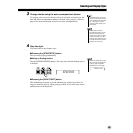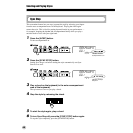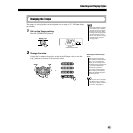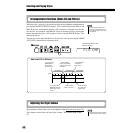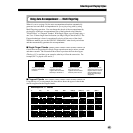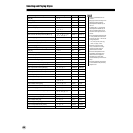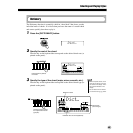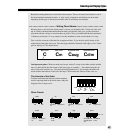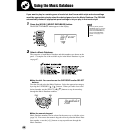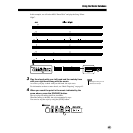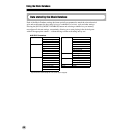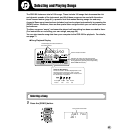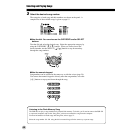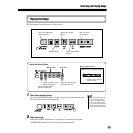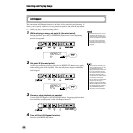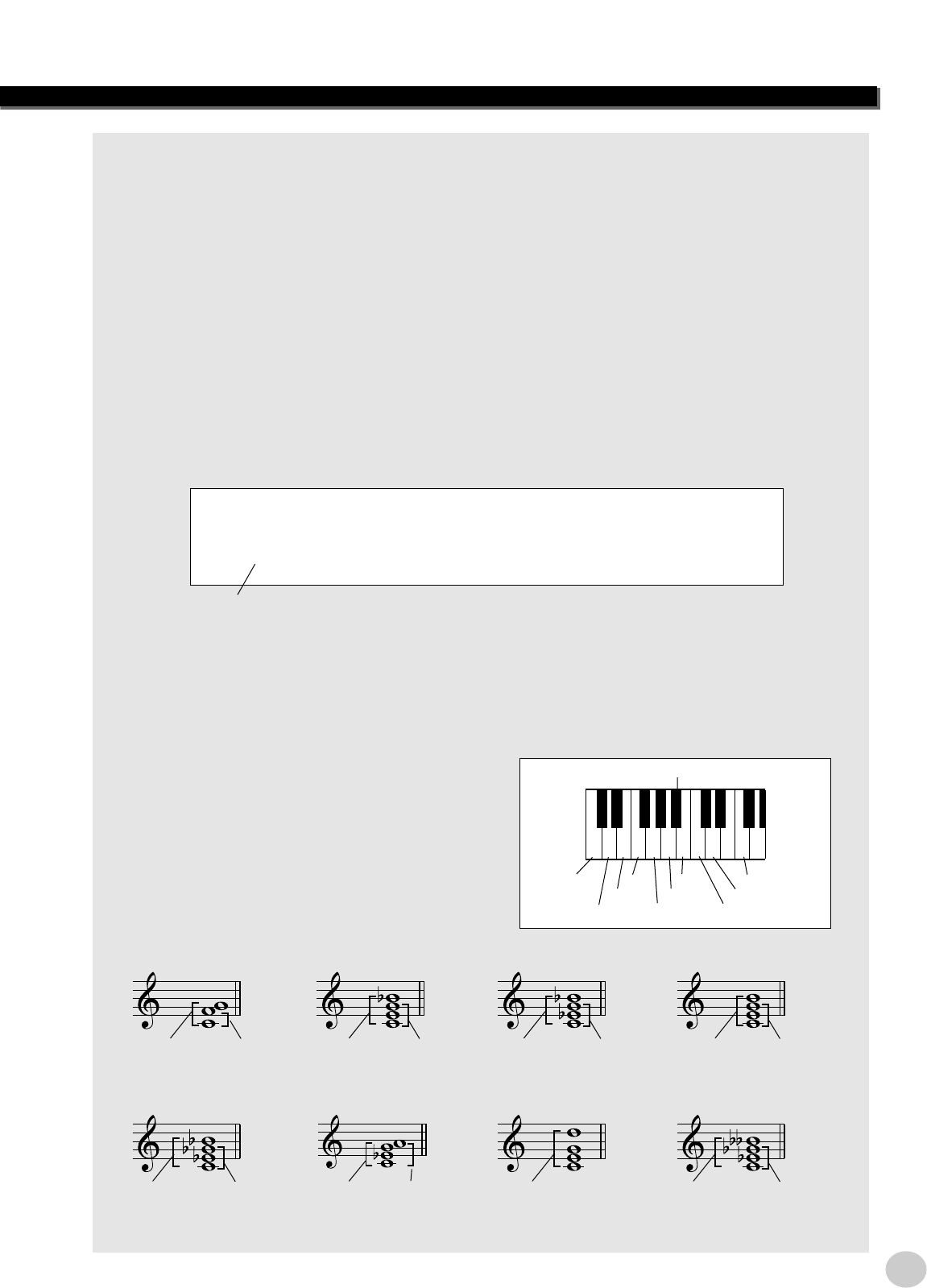
Selecting and Playing Styles
47
Beautiful sounding harmonies can be built in this manner. The use of intervals and chords is one of
the most important elements in music. A wide variety of emotions and feelings can be created
depending on the types of chords used and the order in which they are arranged.
• • • • • • • • • • • • • • • • • • • • • • Writing Chord Names • • • • • • • • • • • • • • • • • • • • • •
Knowing how to read and write chord names is an easy yet invaluable skill. Chords are often writ-
ten in a kind of shorthand that makes them instantly recognizable (and gives you the freedom to
play them with the voicing or inversion that you prefer). Once you understand the basic principles
of harmony and chords, it’s very simple to use this shorthand to write out the chords of a song.
First, write the root note of the chord in an uppercase letter. If you need to specify sharp or flat,
indicate that to the right of the root. The chord type should be indicated to the right as well. Exam-
ples for the key of C are shown below.
One important point: Chords are made up of notes “stacked” on top of each other, and the stacked
notes are indicated in the chord name of the chord type as a number — the number being the dis-
tance of the note from the root. (See the keyboard diagram below.) For example, the minor 6th
chord includes the 6th note of the scale, the major 7th chord has the 7th note of the scale, etc.
The Intervals of the Scale
To better understand the intervals and the numbers
used to represent them in the chord name, study this
diagram of the C major scale:
Other Chords
Major chord
C
Minor chord
Cm
Augmented chord
Caug
Diminished chord
Cdim
For simple major chords, the type is omitted.
CDEFGABCDE
F
Root
2nd
4th
3rd
5th
7th
6th
Octave
11th
9th
Dominant 7th (flatted 7th)
Csus4
5th 4th
C7
Dominant
7th
Major chord
Cm7
Dominant
7th
Minor chord
CM7
7th Major chord
Cm7bb
bb
5
Dominant
7th
Diminished
chord
Cm6
Minor
chord
6th
C(9)
9th
* Bbb = A
Cdim7
Diminished 7th
(double flatted
7th)
Diminished
chord



